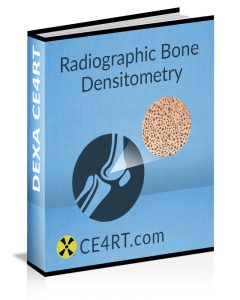Keeping Bones Strong and Healthy in Children and Adolescents

In this article we give a brief overview of some of the factors that affect bone health in children and adolescents. The period of life from birth to adolescence is vital in terms of building a healthy skeleton. It is also important in terms of developing habits that aid in keeping bones strong and healthy. These habits can help maintain robust bone health through the individual’s adult and older years.
Most people achieve peak bone mass during adolescence. Peak bone mass is determined by genetic factors, but also by lifestyle choices. Thus, nutrition and physical activity in children is important. The influence of their parents in regards to healthy lifestyle choices is critical in the first 18 years of life. In particular, rapid bone accumulation takes place in the first two years of life and then again during early adolescence. Therefore, these two periods are especially important in keeping bones strong and healthy.
Health professionals involved in the care of toddlers and adolescents have an opportunity to make a considerable positive impact on the future bone health of their patients. Although bone diseases in children and adolescents are relatively rare, healthcare providers must nonetheless be aware of the warning signs and symptoms that can signal potential problems. In particular, vigilance is needed in high-risk patients based on genetic factors, behaviors, and certain diseases and medications that predispose to poor bone health.
Risk Assessment, BMD Testing, and Referral to Specialists for Children and Adolescents
In the majority of children and adolescents, bone development proceeds uneventfully. The health professional’s role is to educate and encourage youngsters and their parents in healthy lifestyle choices. Keeping bones strong and healthy requires appropriate nutrition and physical activity. This also promotes the child’s overall health status. Nonetheless, although rare, health professionals must be alert to the possibility of bone diseases in pediatric patients. Providers must also be alert to the presence of certain medical conditions and treatment with certain medications that can predispose children and adolescents to poor bone health.
Growth Curve and Eating Disorders
In children, a failure to maintain the natural growth curve is a red flag to health providers. It indicates the possible presence of a skeletal disorder. Although a variety of factors can result in this abnormality, a full workup should be considered, including testing for metabolic bone disease. Another factor to consider in keeping bones strong and healthy is the presence of an eating disorder. Although relatively rare, eating disorders such as bulimia and anorexia can be extremely harmful to the skeleton and the patient’s overall health. Primary care providers should remain vigilant for any unexpected changes in weight or appearance. Delayed onset or cessation of menstruation in adolescent girls also warrants investigation. Patients with a suspected eating disorder should be referred to a specialist. Children diagnosed with anorexia or bulimia should receive immediate care at an eating disorders clinic.
Menstruation
During routine health checks of female adolescent patients, providers should inquire about the onset and regularity of menses. This is an important consideration in keeping bones strong and healthy. Regular menses are a sign that the gonadal axis is intact and that there is adequate exposure to estrogen. Cessation of menses after menarche (for any reason other than pregnancy) is known as secondary amenorrhea. This condition warrants an investigation because prolonged secondary amenorrhea has severe and longstanding effects on bone health. It is associated with a high risk of stress fractures in the short term and a risk of osteoporosis and fragility fractures in the long term. Therefore, if a healthy young teenager experiences unexplained cessation of menstrual periods, this is a warning signal to healthcare providers.

The most common cause of secondary amenorrhea in healthy young women is strenuous physical activity (for example, cross-country running). In addition, activities that are strenuous and place an emphasis on low body weight (for example, ballet and gymnastics) place young women at a very high risk of developing secondary amenorrhea. In many instances, cessation of menstrual periods is the only sign that something is amiss and that the patient needs medical attention.
Treatment of Secondary Amenorrhea
If secondary amenorrhea is identified in an adolescent girl, the first step is usually to improve the patient’s nutritional status. A balanced diet and increased intake of calorie-dense foods like cheese and nuts for a couple of months can help in keeping bones strong and healthy. Young athletes with secondary amenorrhea should be encouraged to curtail strenuous physical activity. Health professionals should also stress the importance of improving nutrition to the patient. Parents, trainers, and coaches should be encouraged to participate in the counselling sessions. The serious short- and long-term consequences of this condition should be explained to all the stakeholders in the patient’s health.
Fractures
It is the responsibility of healthcare professionals caring for a child or adolescent to investigate the cause of every fracture. The circumstances surrounding the injury and the degree of trauma involved must also be evaluated. The majority of childhood fractures are the result of injuries (for example, sports related). However, the potential for underlying bone disease and child abuse must also be considered. Diagnosis of osteogenesis imperfecta is of particular importance because repeated low-trauma fractures can lead to misdirected suspicions and wrongful accusations of child abuse. As part of their efforts towards keeping bones strong and healthy, healthcare professionals should be aware that multiple fractures are a warning sign of possible bone-related disorders.
As mentioned before, early puberty is a period of rapid growth and remodeling of bone. The mineralization of new bone during this period frequently lags behind new bone formation. This makes fractures relatively common in young adolescents. Nonetheless, any fracture in a teenager should be reported to the patient’s primary care physician and further investigation should be conducted. Risk factor assessment includes obtaining a family and personal medical history to determine if any further steps are necessary. In young children, referral to a pediatric metabolic bone disease specialist. Oftentimes an endocrinologist, rheumatologist, or nephrologist, is required, for example, when an infant sustains a fracture.
Medications and Medical Conditions
Certain medications and medical conditions predispose children to bone problems. In order to help with keeping bones strong and healthy, children and adolescents diagnosed with these conditions or on treatment with these medications should be carefully evaluated. The appropriate health professionals can ensure there is no negative impact on bone health. For example, survivors of childhood cancer are at high risk of developing bone disease and should be appropriately monitored. Rarely, metabolic disorders that affect calcium and phosphorus metabolism or disrupt mineral homeostasis in the body can cause bone problems in children. Genetic anomalies can cause primary diseases that affect the bones. Health professionals should be alert to signs and symptoms such as a failure to follow the natural growth curve, unexplained fractures, and skeletal deformities. Children should be referred to a specialist in pediatric bone diseases if any problems are suspected.
Bone Mineral Density Testing in Children and Adolescents
Measurement of bone mineral density is not recommended in healthy children. This is not a routine test for keeping bones strong and healthy. Even in high-risk children, the results of BMD testing should be interpreted with caution. This is because the test is an imperfect assessment of bone density before a person has attained peak bone mass.
If DXA (dual x-ray absorptiometry) is used to measure bone density in children, the results should be expressed in terms of Z-scores which provide a comparison based on age. It is worth noting that T-scores, which are typically reported in adults, compare individual scores to peak bone mass. Peak bone mass is achieved only in the third decade of life. Thus, reporting the bone density of children and adolescents in terms of T-scores will lead to an inaccurate underestimation of their bone density.
In addition, there is no large, uniform database against which a child’s bone density can be referenced. Moreover, in children who suffer from chronic diseases, there can be a mismatch between chronological age and bone age. In other words, the bones of an older child with a chronic disease may have the density typically seen in the bones of a younger child. All these factors must be kept in mind when taking measures for keeping bones strong and healthy in children and adolescents.
X-ray Continuing Education
For more comprehensive information on bone imaging and BMD testing, purchase our ARRT® CE course which is good for 23 CEUs recognized by the ARRT® and other national and state registries. We also have a range of online courses on a variety of topics worth between 1 and 24 CE credits, giving you the flexibility to choose the type and number of CEUs you need.
Get your free ceu for radiologic technologist here.
